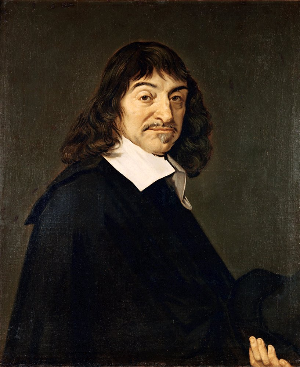Introduction to Cartesian Coordinate System
WHO INVENTED WHO?

THE COORDINATE PLANE
TEST Yourself!
Use the x-value and y-value sliders to graph the blue point.
1. If x is negative, it is to the _______________ of the y axis.
2. If x is positive, it is to the _______________ of the y axis.
3. If y is negative, it is to the _______________ of the x axis.
4. If y is positive, it is to the _______________ of the x axis.
5. Fill in the blanks with a positive and negative. See the example.
a. If a point is in Quadrant I, its coordinates are (+, +)
b. If a point is in Quadrant I, its coordinates are (+, -)
c. If a point is in Quadrant I, its coordinates are (-, +)
d. If a point is in Quadrant I, its coordinates are (-, -)
5. Switch to practice mode and see how fast you can graph all of the indicated points. It may help to reset to the origin each time and figure our the coordinates of the targets first.